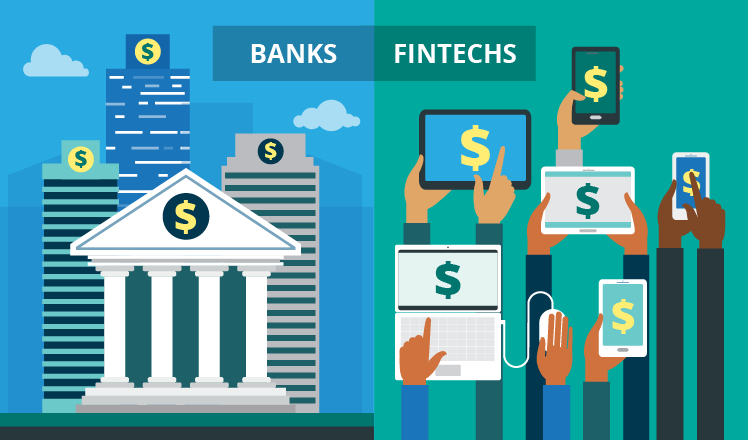Banking As It Evolves And New Technologies That Define It

The year is 2019 and times for the banking sector probably have never been better. While ten odd years back, the global financial meltdown happened, the sector has constantly strived to get over it since. Technology and its speed of evolution have aided this process and as we have seen, a number of fintech products have been released into the market so far. Platforms, where businesses can come into their own with fair pricing and not too many encumbrances, have furthered the sector’s ambitions.
One look at the KPMG Pulse of Fintech 2018 report, and you’ll see how the banking sector is progressing. The global investment in fintech last year reached $111.8 billion spread across 2196 deals. In the US alone for instance, 2018 saw an investment of $54.5 billion, which was a massive jump from $29 billion in 2017. Alongside, even Latin America exhibited growth in the space, with Brazil leading the way. Similarly, in Europe, where VC investments had seen a yearly decline, 2018 witnessed the second largest VC investment and late-stage fundings specifically saw a rise. The fintech investment “high” was also observed in the Asia Pacific region, where 372 fintech deals brought in $22.7 billion dollars.
So you get the picture. Fintech is charging ahead and if experts are to be believed the next five to ten years will be crucial. People are more often than not digital natives and innovation is a buzzword backed by action. Overall, regulations are being relaxed to make integration possibilities easier. And the following themes are emerging to define the fintech space more than ever –
– User experience: Two factors have predominantly contributed to customer needs changing. One, the fact that physical interactions between banks and users have gone down considerably, with digitization becoming the order of the day. Two, continuous innovation and enhancements on digital products and services have shown people the best side of user experience. So, it’s a fact that user experience aided by vision and innovation, is a theme that will continue to drive financial services technology companies.
– More openness in business processes: Open banking has ensured regulations take the relaxed road, and this, in turn, has allowed the banking sector to grow beyond its traditional dynamics. Technologies like API being introduced has also gone a long way in reducing costs while expanding sources of revenue. This trend will continue to have a bearing on the fintech sector.
– Cost-Effectiveness: Digitisation-centric banking activity has reduced the cumbersomeness of physical processes and streamlined costs to a large extent. This will continue to play in the background as banking technology becomes more attuned to user needs.
Now the big question is, which latest technologies in the banking sector are here to remold the way banking is done and also influence its future? Here’s a list.
Investing For Beginners – Where To Start, Types Of Investments
– API Platforms :
API platforms are a great example of how technology is growing to be more about communication than anything else. An Application Programming Interface is a software intermediary that makes space for two or more applications to interact. Take the example of booking a flight through a third-party website. Each time you use it, you’re able to access the data on the carrier website.
An API interface makes it possible for the third-party website and the carrier website to come together and create a seamless experience. APIs in their current form and their evolving avatars have a number of things working for them. For one, security breaches are almost unheard of, for the simple reason that neither the server nor the device you’re using is completely exposed to each other. To put it simply, it’s only as much information as is needed, finds exposure. Secondly, they adhere to multiple standards including REST and HTTP, and that makes them developer-friendly. Thirdly, APIs make space for a variety of interactions between users and their banks. And choice-making will only become more attractive as users want to take more independent decisions around their transactions.
– Payment Gateways :
Payment gateways, when it comes to the latest technologies in the banking sector, are making leaps towards the future. Once legacy-based and inflexible, with staggered multi-level processes and expenses involved, gateways are slowly meeting users with much-simplified experiences. Peer-to-peer gateways specifically look at speed and optimize costs as their main objective.
As more blockchain-based systems emerge, the ease of global marketplaces would increase as well. Partaking fully in e-commerce is still a distant dream for many developing nations, primarily because systems are still archaic and costs continue to be high. Price drops will ensure more people have access to such technology and it could mean the banking sector starts looking less daunting to those who don’t have the benefit of microloans or online banking yet.
– Blockchain :
Speaking of blockchain technology is to speak of complete decentralization of online banking transactions without losing out on security. Blockchain technology works along with the concept of a decentralised system that records all transactions done using a unified digital currency. Transaction entries, both past, and present can be viewed under blockchain, though currently there are stringent rules around the addition of new records.
What is interesting is that this banking technology will enable a number of other moves by fintech companies. One of them is cross-border payments. Traditionally, they deal with multiple currencies and unfailingly, processes turn out to be more expensive than desirable and accessible. Blockchain, though, simplifies this without the burden of increasing costs. in fact according to Investopedia, while traditional cross-border payments can hike remittance costs to almost 20% of the amount being transferred, with blockchain, it can come down to 2%.
– Artificial Intelligence :
It is inarguably true that banking technology is a lot about optimizing costs at the moment and this trend is expected to continue into the future. In this context, it is absolutely essential to speak of artificial intelligence, because the main essence of this technology lies in streamlining processes so that a lesser number of human beings need involvement. While some speak of this in hushed tones, indicating the loss of jobs, AI, like blockchain, is anticipated to be a moving force towards futuristic digitalization.
For one, AI interventions may reduce human error significantly. Secondly, their humanistic programming will allow banks to follow up with customer needs in greater detail. The most interesting arc is perhaps that the unbanked will finally see the light of banking and get access to advantages. AI will also become the bridge between the many gaps that the industry throws up, enabling experts to find solutions more attuned to user needs.
– Hybrid Cloud
Among the latest technologies in the banking sector, the hybrid cloud is an important one. As much as it comes with complexities, mainly the security factor that leads to further questions around private and public clouds, a hybrid cloud will be instrumental in solving the data storage problems in the future. As markets expand and new opportunities emerge, hybrid clouds will be at the front of the game.
In the current scenario, private clouds are still not the norm, simply because the resources needed are too high for most businesses. The need for such services has been met to an extent by public clouds created by Google and AWS. According to Gartner though, as soon as 2020, almost 90% of businesses will have some version of the private cloud idea. Looking forward, this would further be enabled by other technologies such as AI and automation, so that processes are managed more efficiently and securely.






